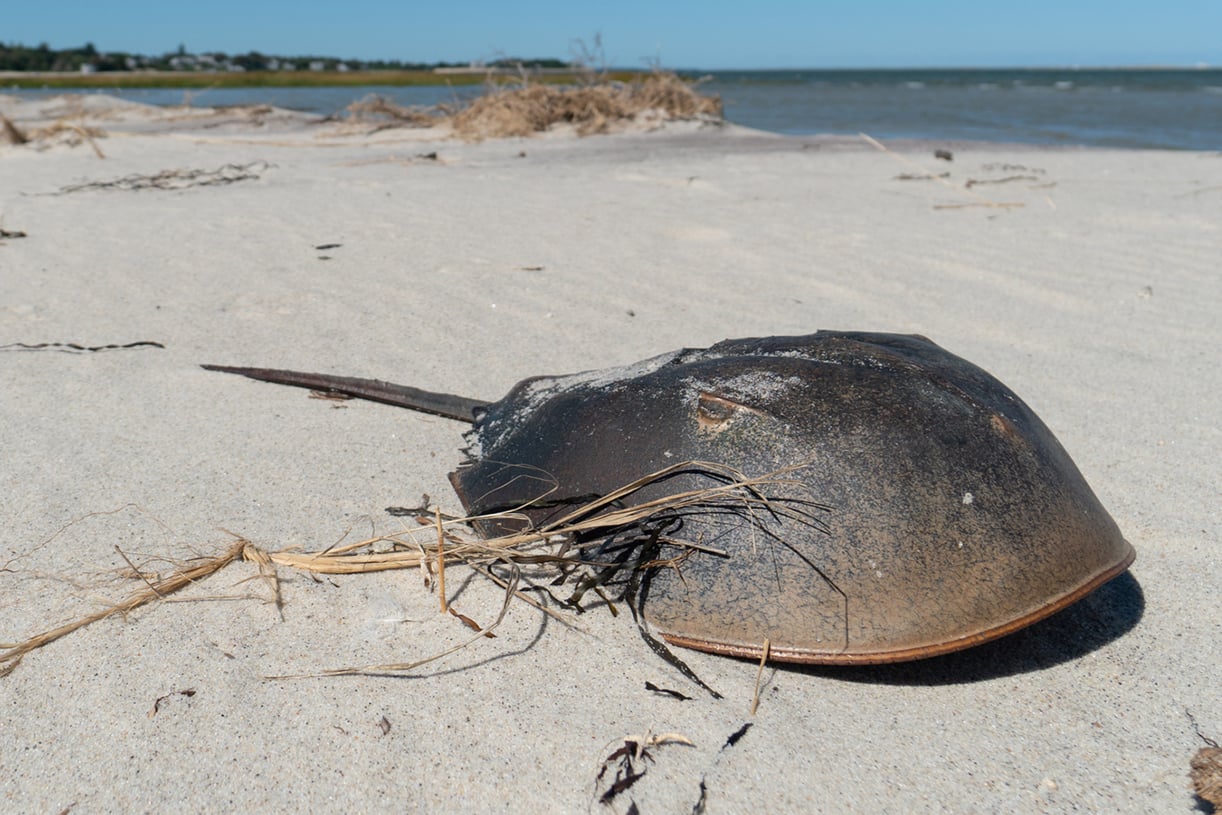Protecting Birds & Wildlife
Horseshoe Crab Monitoring
Horseshoe crabs have existed in practically unchanged form for over 400 million years, and they look the same now as they did when living side-by-side with dinosaurs.
In fact, horseshoe crabs are commonly referred to as "living fossils" because they are one of the most ancient creatures still living today.
The species that currently calls Massachusetts home is the Atlantic Horseshoe Crab (Limulus polyphemus). Unfortunately, the Commonwealth's population of these incredible marine animals is depleted and is facing increasing threats.
Species Overview
Horseshoe crabs are unique creatures with features found in few other animals.
Unique Adaptations
Horseshoe crabs have excellent eyesight thanks to 5 pairs of eyes and can see just as well at night as they can during the day. Horseshoe crabs also have a wide field of vision, which means they can see their surroundings in all directions—in front, behind, both sides, and above! They are also the most primitive organism capable of lateral inhibition—an ability for eyes to clarify the borders between light and dark objects.
Photoreceptors on their tails are sensitive to circadian rhythms, enabling horseshoe crabs to "tell time "by tracking the hours of daylight. Large chemical receptors on their legs gather sensory input in much the same way as insect antennae.
Mating & Nesting
In the spring, adult crabs make their way onto beaches during high tides to mate. Males use their front "boxer” claws (shaped like boxing gloves) to physically attach themselves to the larger female crabs, and they will stay attached for an entire tide cycle—or longer. The females then dig shallow nests about 5"-10" deep in the sand where they lay 2-5 clusters that each consist of anywhere from 2,000-4,000 eggs. Over the course of a season, a single female horseshoe crab may lay up to 80,000 eggs.
Development takes two weeks before the crabs hatch as tailless trilobite larvae. Once hatched, larvae will molt six more times in the first year while slowly moving out to deeper water.
Threats to Horseshoe Crabs
In Massachusetts, horseshoe crabs are harvested to be used as bait for the whelk fishery. Additionally, their blood is the only source of a chemical that's used to test medical devices and injectable drugs for toxins. When harvested for medical use, the crabs are caught, bled, and then returned to the water. Unfortunately, up to 30% of horseshoe crabs ultimately die following this bleeding process.
Increased harvesting of these fascinating animals threatens their population. The problem has been compounded by closures of horseshoe crab fisheries in New Jersey, Connecticut, and other neighboring states. As a result, there is increased harvest pressure on the dwindling populations of horseshoe crabs in Massachusetts waters.
Collecting Data
Mass Audubon has been conducting long-term surveys of spawning horseshoe crabs on Cape Cod and Martha's Vineyard since 2001 in collaboration with the University of Rhode Island, the National Park Service, the Massachusetts Division of Marine Fisheries, and several other organizations and institutions.
At Wellfleet Bay Wildlife Sanctuary, conservation staff work with trained community science volunteers in the spring and early summer to count adult horseshoe crabs spawning at several sites on and around the new and full moons at high tide.
The data collected during these surveys is submitted to the Massachusetts Division of Marine Fisheries, which uses the information to determine the best conservation and management practices for Massachusetts horseshoe crabs and the horseshoe crab fishery.
Volunteers are needed every year during May and June to count horseshoe crabs as they come onto beaches to spawn during high tides.
Stay Connected
Don't miss a beat on all the ways you can get outdoors, celebrate nature, and get involved.



